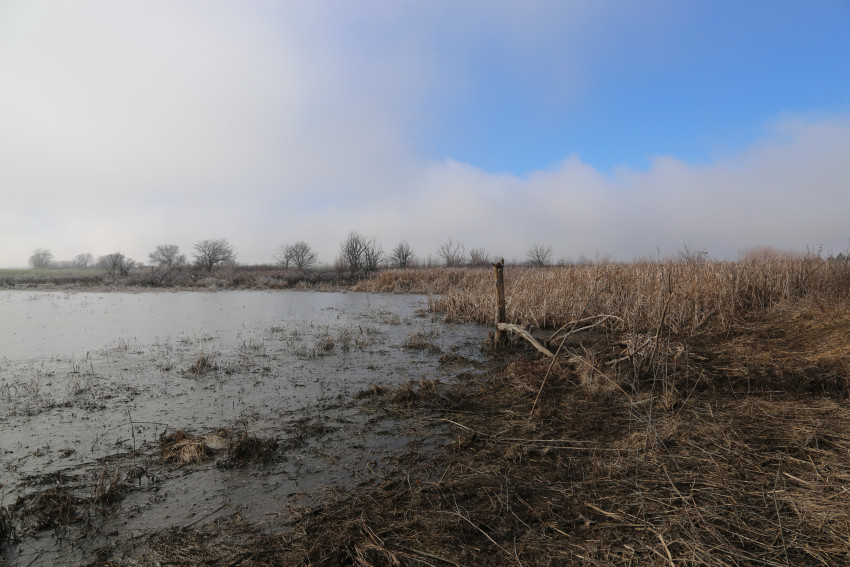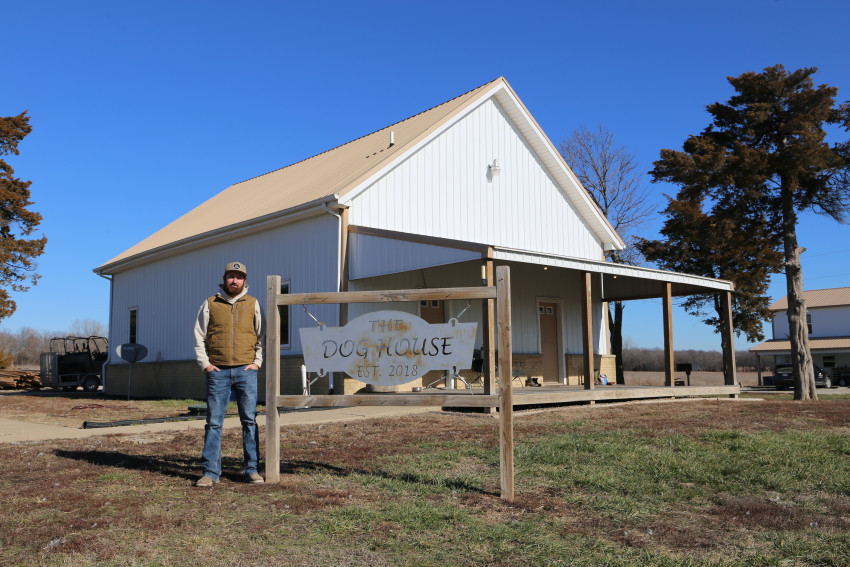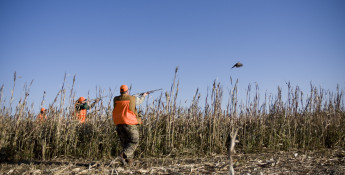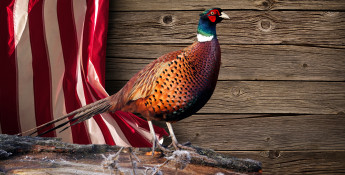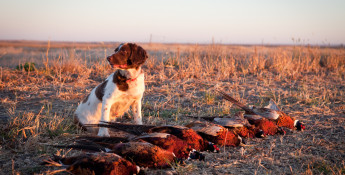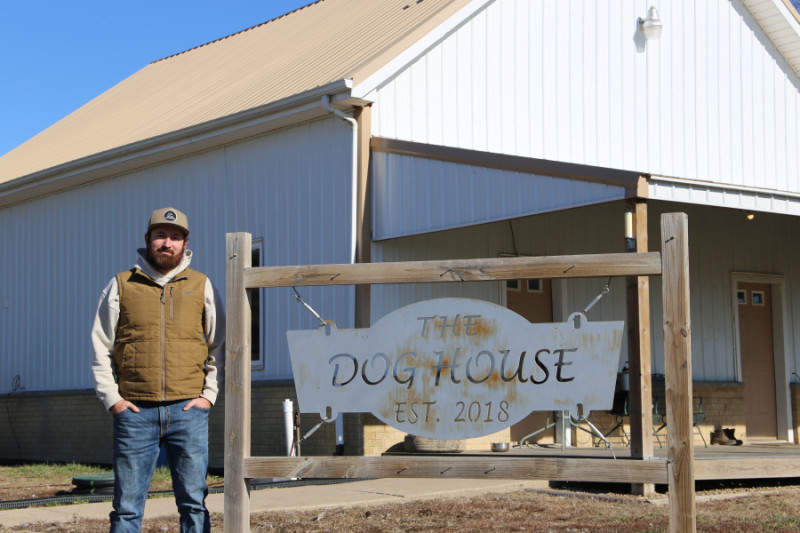By Greg Doering on January 29, 2024
Farming Fowl
Hunter turns passion into career as hunting guide, lodge operator at Duck Wild Waterfowl
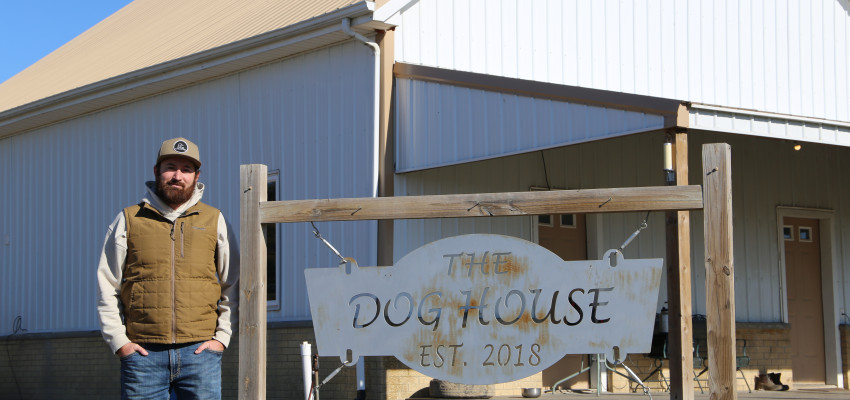
Like a lot of people, Travis Sipe’s career started in college. However, unlike most, he found his calling by his desire to avoid working during a school break. That planted the seed for what eventually turned into Duck Wild Waterfowl, a guide and lodging service in Coffey County.
“I didn’t want to get a real job over Christmas break, and I didn’t want to give up hunting,” Sipe says. “I had some guys hit me up to take them hunting because they weren’t getting any birds. There were three of them and I was hunting with two buddies. They asked how much it would be and I said $100 a person so we could each make $100. I thought that was pretty cool.”
Sipe guided his first hunt for money in 2015 and continued the practice when he was on breaks from Emporia State University. Three years later, he took aim at making it his career.
“I bought an old church and remodeled it into the first lodge,” he says. “I started leasing some ground to hunt and built the second lodge in 2022.”
SEASONAL HOST
Sipe can host up to 20 hunters at a time between the two lodges (the original is dubbed “The Dog House” because of a bar sign left by the previous owner, the newer one is unnamed so far), with the maximum capacity usually occurring during waterfowl season, which runs from November through February. Limited numbers of deer and turkey hunters bookend the seasons in October and April.
“We see about 400 individual faces a year and the average hunt is three days,” Sipe says. “Most people are within six to eight hours away, primarily coming from Illinois and Louisiana.”
The waterfowl hunters are looking for ducks, especially mallards, along with several species of geese. Sipe says on average, each hunter takes five birds per day. Sipe has hunting access to more than 150 square miles of land in Coffey, Osage and Lyon counties through leases with area farmers and ranchers, which offers plenty of variety for the hunters.
BIRD HIGHWAY
Duck Wild’s lodges and hunting ground are on the eastern edge of the Central Flyway, essentially a highway migrating waterfowl follow from Canada to the Gulf of Mexico. It’s one of four across the U.S., with the Mississippi Flyway being the most heavily trafficked by both birds and hunters.
Even Sipe’s position in the Central Flyway doesn’t have the most birds. He says portions of central Kansas see two to three times the number of waterfowl, along with a corresponding number of hunters chasing them.
While there are fewer birds overall, Sipe’s location is ideal in other ways. The lodges and hunting grounds are surrounded by the Flint Hills National Wildlife Refuge, Melvern Lake and John Redmond Reservoir, which all provide prime habitat for waterfowl flying by. Another attraction is the temperate waters of Wolf Creek Generating Station’s cooling reservoir, which reliably offers open water to ducks and geese.
“When the weather’s right, the hunting is pretty good here,” Sipe says. “There’s been fewer birds this year because it’s been so warm to the north.”
MIGRATION PATTERNS
Waterfowl typically flee Canada during the winter in search of food and open water, but in late 2023 much of central Canada was free from snow and ice that would normally induce ducks and geese to move on. Despite the unseasonable weather, Sipe was still able to find birds for his customers.
“I scout every day,” Sipe says. “I drive 300 miles a day in season when we have multiple groups in to make sure we know where we’re going tomorrow. If the hunting is bad in the morning, I try to have some options available in the afternoon.”
While hunting season is comparable to a farmer harvesting their crop, the planning involved is similar, too. In the summer, Sipe plants food plots consisting primarily of millet in and around ponds that help attract waterfowl.
“Like everybody else who does this, I got started because I like to hunt and now I don’t hunt much anymore,” Sipe says. “I enjoy the land management side of things, getting everything ready.”
Mild winters have also affected the southern portion of the Mississippi Flyway, which is why several of Sipe’s customers come from Louisiana and Arkansas where there are fewer birds than in the past because they’re finding the food and water they need farther north.
A TYPICAL HUNT
An average group size is six hunters who will be up well before dawn to set up for a usual day of hunting. Sipe says a group will leave the lodge between 5 and 5:30 each morning and stay out until late morning before heading back to the lodge for lunch and to rest up for the next day. Groups usually stay for three days at a cost of $350 per day, which includes hunting and lodging. Hunters have access to a full kitchen to prepare their own meals.
“We try to just hunt in the morning to allow the birds to rest,” he says.
Sipe says he doesn’t want the entire experience to be about killing birds. The lodge experience is key to a good hunt.
“We cater to the blue collar guy,” Sipe says. “They want to go on a good hunt and drink a few beers afterward. I also enjoy sitting at the lodge talking to the guys, but I have a little one at home now so I don’t spend nearly as much time here as I used to.”
MANAGING THE LAND
Sipe recently purchased his second piece of land in addition to the small acreage the lodges sit on. He thinks the hunting operation is about as big as he wants to grow it, but he’d like to do even more on the land management side.
“My long-term plan is to lease less, own more and make what we have better and still provide a good experience for our hunters,” he says.
But Sipe won’t be giving up all of his leases because he really enjoys the relationships he’s forged with landowners, and they welcome the small payments they receive in return. “’It pays my taxes’ is how they put it to me,” he says.
The leases basically give Sipe the right to hunt a piece of ground if he chooses, but he realizes not everyone wants to hire a guide to go hunting. He often allows others, especially locals, to hunt ground he’s leased if it’s not in the daily rotation.
“I didn’t get into this to take people’s hunting rights away from them,” he says.
Sipe not only implements farming practices with his food plots, he says his landlords also contribute to waterfowl populations with practices like no- and minimum-till in their fields, which leaves the prior season’s crop residue for the birds. Sipe actually plants more food plots he will never hunt to provide a safe haven for waterfowl returning north well after hunting season has ended.
Hunting has had a minimal impact on the number of ducks and geese. A far greater threat has been the loss of breeding habitat in Canadian wetlands. Organizations representing hunters have been some of the primary drivers of habitat preservation and restoration to ensure future generations will continue to enjoy the sport.
In many ways, Sipe’s job isn’t too different from the farmers he leases land from. They’re all working to improve the land to increase their crop. He’s just in the business of farming waterfowl rather than grain or livestock.
Learn more about Duckwild Waterfowl on its Facebook page here or the website here.



